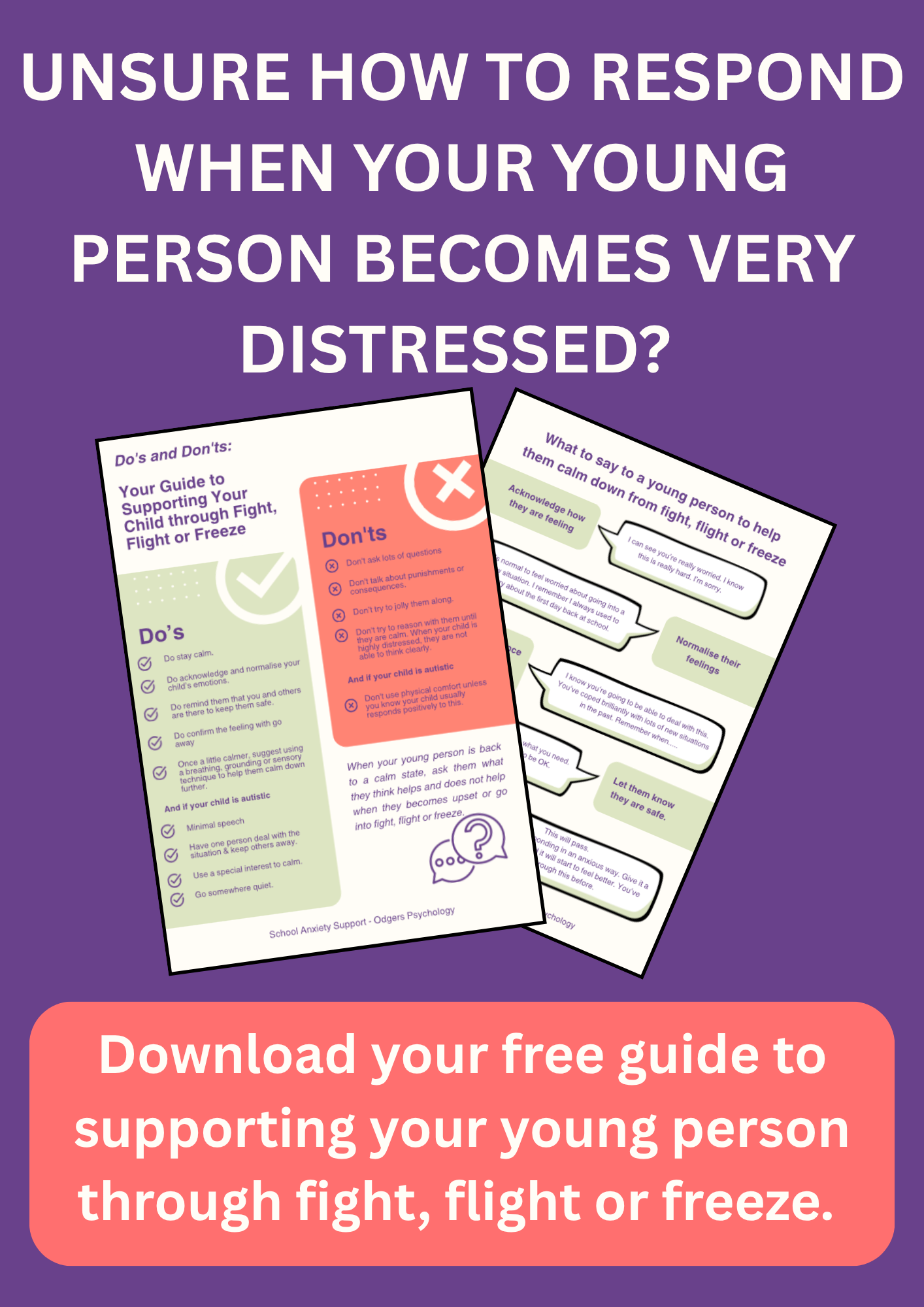Tips to help your child learn to self-regulate
Sep 07, 2023
In a previous article I gave some suggestions for what to say to your child when their anxiety had sent them spiralling into fight-fight response. By empathising with them, validating their feelings and offering your support, you help your child feel understood and more in control. Alongside this, it’s also very helpful if you can support your child to use some regulating strategies to further calm themselves down.
Just as your child didn’t learn to read overnight, it will probably take them a long time to learn how to independently get themselves back to a place of peace from a state of high anxiety. It’s not just a question of showing them a strategy a couple of times and them being able to use it straight away. Children often need a huge amount of input from calm, responsive adults before they learn how to self-regulate by themselves.
So what might this look like in practice for you and your child?
- Because no-one learns new information when they are highly distressed, you’ll need to introduce your child to a couple of regulating strategies when they are completely calm. Strategies that redirect your child's attention onto things other than their anxious thoughts or physical sensations can be particularly effective. For example, you could teach your child that when they feel worried they can think of 5 things they can see, 4 things they can hear, 3 things they can touch, 2 things they can feel and one thing they can smell. Or that they should look around and pick out all the green / blue / red things they can see in the environment. Or that they should go through the alphabet trying to name countries or girls names starting with each letter.
- It’s helpful to get your child to regularly practice these strategies when they are calm. Initially, practice the strategy alongside your young person, showing them how to do it and providing encouragement and lots of praise. Later, see if they can do it by themselves.
- You might also want to demonstrate using the strategies yourself when you get worried or tell your child about times when you had a go at using the strategy when you felt panicky going about your day.
- It’s very common for children to learn a regulating strategy, but then not know when they need to use it. If you notice that your child is beginning to get worried, it can be helpful to prompt them to have a go at the strategy. For example, “You’re starting to breathe really fast. I’m wondering if you’re feeling a bit panicky. How about we have a go at the strategy we’ve talked about?” Alternatively, if your child has already hit full blown panic, once you’ve been able to emotionally connect with them through empathising and validating, you might want to suggest that now is the time to have a go at using their regulating strategy.
- Being in the middle of fight-flight-freeze feels terrible! Your heart pounds, you feel dizzy and you may start to sweat or feel shaky. You’re hyper focused on the danger you see around you and you can’t think about anything else. When our children get into this highly distressed state, it’s very hard for them to think of anything else other than how to escape the danger they believe they are in. They are very likely to need adult support to lead them back to a place of calm. So when your child first starts using the strategy when they are distressed, it’s very helpful if you can do the strategy alongside them. For example, "OK, let's think of girls names in the alphabet. I'll start. A for Anna. Your turn. Think of a girls name beginning with B. Great! My turn now. Umm, how about about Carla for C. You do D" etc.
- Eventually, with lots of ongoing modelling, prompting and support, your child will be able to use the strategy by themselves without an adult’s input. It is common for this to take much longer than adult think it should, so don’t give up if you think it’s not working straight away.
The strategies each child finds useful and effective will vary according to their interests and motivations. If the first strategy you talk to your child about does is not appeal to them, have a quick google for self-regulating strategies (there are loads of suggestions online) and see if you can find something else your child is willing to have a go at. The process to help your child learn to use each strategy effectively is likely to remain similar to what I have described above.
Teaching your child self-regulating strategies is not a quick fix, but building up a repertoire of appoaches your child can independently use to calm their fear will be an invaluable lesson for them to learn.
Come Along to My Next Masterclass!
Six Simple Steps to Help Your Child Through Fight, Flight or Freeze - A One Hour Masterclass for Parents of Children Aged 6 to 16 with School Anxiety.
Feel calm, confident and connected when your child panics before school or has an after-school meltdown.
Date: 2nd December 2025.
Time: 8pm to 9pm.


